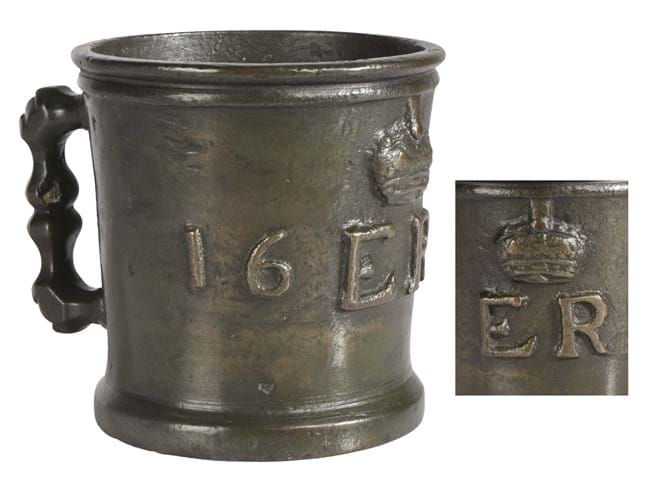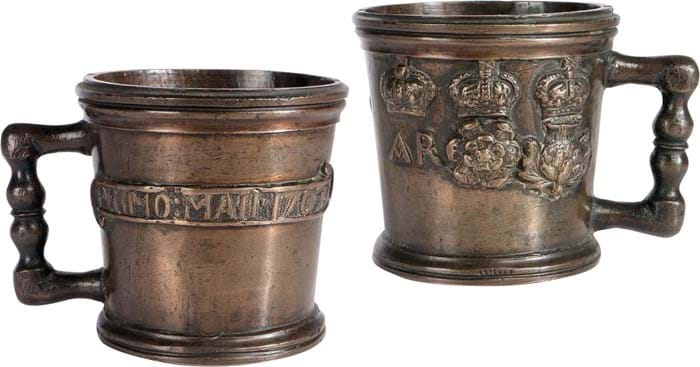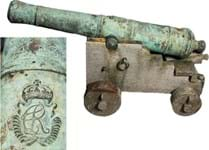Standard measures were made in a heavy, durable material such as bronze and kept safe by the town or city council. Should a dispute over measurement of wine or beer arise, an exchequer measure would be produced by a local official and a comparison made.
The issuing of standard weights and measures has been a regular occurrence in the British Isles for more than 1000 years. Rapid economic growth, and the emergence of a robust tax-collecting machine, led to several issues during the Tudor period alone.
Based on the so-called Winchester standard used in medieval times (when the city was a seat of government), in 1495 the London Exchequer of Henry VII (1485-1509) created new standards for measuring weight, length and capacity, with the standard bushel set at 2224 cubic inches. The bronze copies cast and sent for use in 43 shire towns are among the earliest English measures extant.
Elizabeth I (1558-1603) issued a further set of standard measures from bushel to half pint in 1601 (when the bushel was set at 2124 cubic inches). This issue, sent to 57 shire towns across England, proved so successful that the measures remained the primary standard until the Imperial system in 1824.
Infrequent visits
Official measures from this period, applied with the raised lettering 16 ER 01, make infrequent visits to the market – but one was offered by Bishop & Miller as part of The Oak Interior sale in Stowmarket, Suffolk, on February 23.
This pint measure had been owned by West Yorkshire collector Tony Chapman since it had been bought at Sotheby’s in 1997.
A similar pint standard had sold at Bonhams in 2019 for £12,000, while Ipswich firm Lockdales sold a bronze half pint measure in 2012 for £5400.
The example at Bishop & Miller, however, was competed to a mighty £30,000 (estimate £8000- 12,000) plus 22% buyer’s premium.
Guided at £5000-6000 and sold at £5800 was a similar Queen Anne pint measure made in Scotland shortly after the Act of Union. As well as the crowned cipher AR, it has the crowned rose of England and the crowned thistle of Scotland, along with the inscription Primo Maii 1707, the date of the founding of the UK.
It is thought this piece, with the mark of a reclining deer and STR for Stirling, was made by Stephen Crawford, Deacon of the Hammermen Incorporation of Edinburgh, as Scots weights and measures began to conform with those used in England.
















